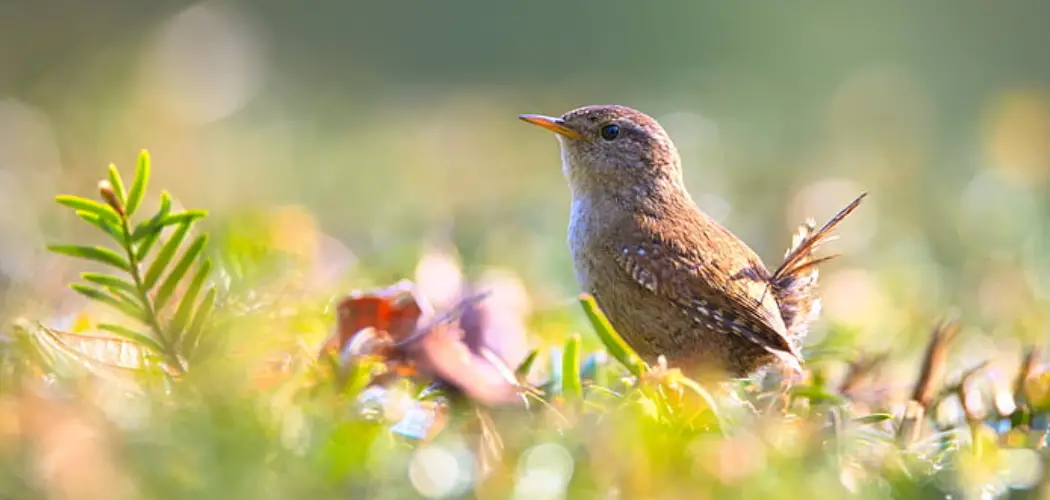Dealing with wrens can be a challenging but necessary endeavor for property owners experiencing issues with these small yet boldly assertive birds. Understanding how to get rid of wrens effectively starts with a deep appreciation for their behavior and habits.
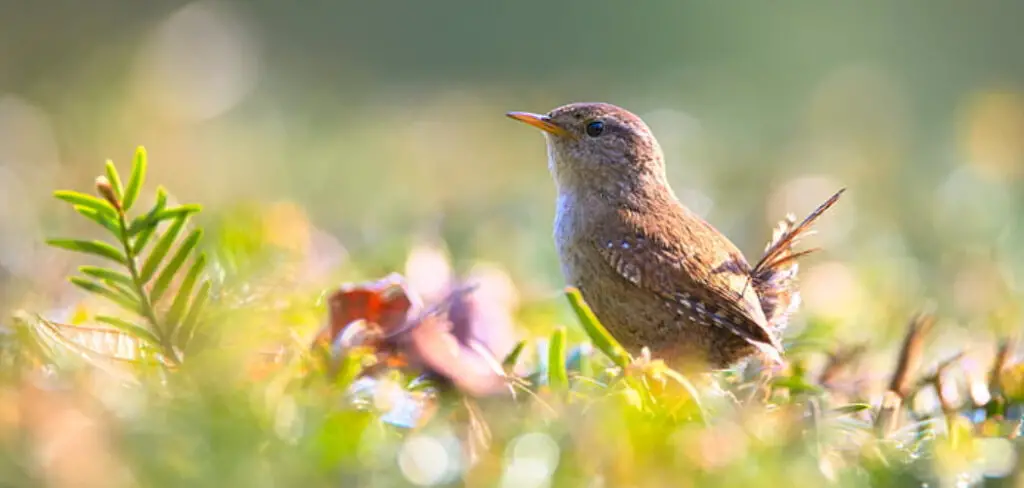
Wrens are known for their remarkable adaptability, often nesting in close proximity to human dwellings, and their innate curiosity and resourcefulness make them both admired and problematic. It’s crucial, therefore, to approach wren removal with humane and effective strategies, ensuring that methods pose no harm to the birds while protecting the integrity and tranquility of our living spaces.
This initial section outlines the importance of understanding the wren’s lifestyle and emphasizes the need for implementing removal methods that respect the delicate balance between human and wildlife cohabitation.
Identifying Wren Nuisance
Identifying the presence of wrens on your property is the first step in addressing any nuisance they may cause. These small, energetic birds leave several indicators of their whereabouts. Firstly, recognizing signs of wren presence is critical; their nesting sites are often hidden in secluded corners or within dense shrubbery and can be identified by their unique, dome-shaped structure made from twigs and leaves.
Additionally, wrens are vocal birds known for their loud, melodious songs that, while beautiful, can become a persistent background noise, especially during breeding seasons.
Assessing the damage caused by wrens involves looking for evidence of crop destruction or property damage. Wrens are primarily insectivorous but may peck at garden fruits and vegetables, leading to crop damage. Their nesting behavior can also cause issues, as they may block vents, damage insulation, or even make nests in operational machinery, leading to costly repairs.
Understanding the legal and ethical considerations for wren removal is paramount. Many species of wrens are protected under wildlife conservation laws, making it illegal to harm or kill them without proper authorization. This necessitates the employment of non-lethal means of removal and control.
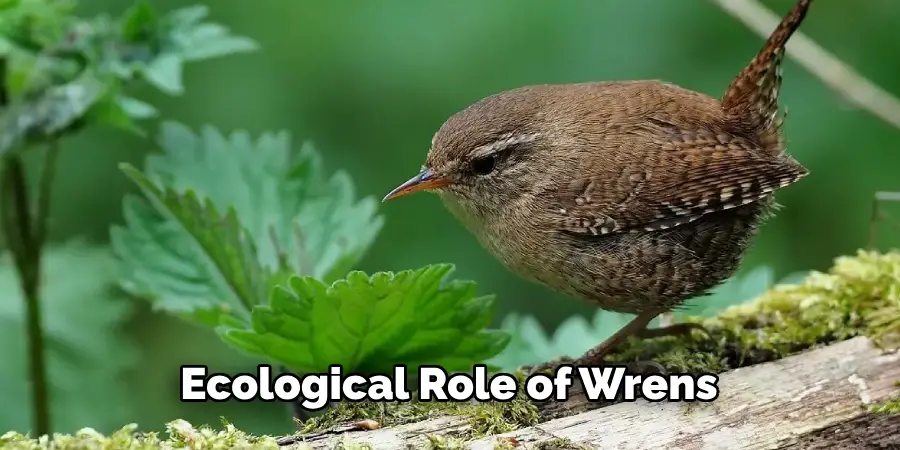
Ethically, it’s important to consider the ecological role of wrens, such as controlling insect populations, which highlights the need for methods that are not only legal but also humane and non-disruptive to the broader ecosystem. Engaging in informed and considerate practices ensures these birds’ well-being and maintains a harmonious environment on your property.
How to Get Rid of Wrens: Implementing Non-Lethal Deterrents
Implementing non-lethal deterrents is an essential step in learning how to get rid of wrens without harming them. This approach focuses on discouraging wrens from inhabiting specific areas through means that alter their environment in ways that are unappealing to them but do not cause physical harm.
A. Noise Deterrents: Using Ultrasonic Devices or Noisemakers to Repel Wrens with High-Frequency Sounds
One effective strategy is the use of noise deterrents. Ultrasonic devices or noisemakers can be deployed to create a sonic environment that is intolerable to wrens but usually imperceptible to humans. These devices emit high-frequency sounds that disturb wrens, encouraging them to seek more peaceful areas.
It’s important to position these devices strategically around areas of frequent wren activity, such as gardens, eaves, or near potential nesting sites. Regularly changing the frequency or location of the noisemakers can prevent wrens from becoming accustomed to the sounds, maintaining the effectiveness of this method.
B. Visual Deterrents: Installing Reflective Objects or Predatory Bird Decoys to Startle and Deter Wrens
Visual deterrents offer another humane way to discourage wren activity. Reflective objects like CD discs, aluminum foil strips, or specially designed reflective tape can be hung around the property.
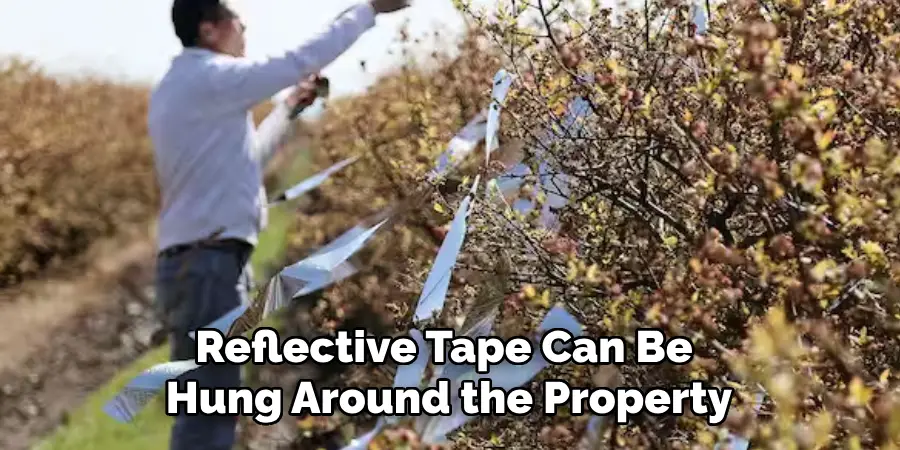
These objects create unpredictable patterns of reflective light that startle and deter wrens.
Additionally, installing decoys of predatory birds, such as owls or hawks, in visible areas can create a sense of danger for wrens, motivating them to avoid the area. It’s crucial to occasionally move these decoys to simulate natural movement, thereby enhancing their deterrent effect.
C. Physical Barriers: Blocking Access to Nesting Sites or Targeted Areas with Netting, Screens, or Barriers
Physical barriers provide a direct method to prevent wrens from accessing preferred nesting sites or feeding areas. Installing netting or screens over vents, eaves, and other openings can block entry without causing harm to the birds.
Transparent bird netting can also be used to protect fruit trees, vegetable gardens, and other areas attractive to wrens, effectively keeping them away from food sources while allowing plants to receive sunlight and water. For best results, ensure that the barriers are secure and checked regularly for any signs of damage or wear that could allow wrens to penetrate the defenses.
How to Get Rid of Wrens: Modifying Habitat to Discourage Wrens
Modifying the habitat around your home or property is critical in discouraging wrens from taking residence or causing nuisance. You can significantly reduce their presence without resorting to harmful measures by making the environment less hospitable to these birds. Here are some effective strategies:
A. Removing Food Sources
One of the simplest ways to deter wrens is by removing their food sources. Wrens are attracted to areas where food is readily available. Clearing away bird feeders or diligently cleaning up spilled seeds can make your property less appealing to them.
Although bird feeders are meant to attract birds, they do not discriminate by species, so selecting birds without attracting wrens can be challenging. Regularly sweeping or vacuuming areas under bird feeders can help minimize food debris.
B. Vegetation Management
Wrens prefer dense cover for nesting and protection from predators. By managing the vegetation around your property, you can make the area less inviting for these birds. Pruning shrubs and trees, especially those close to buildings, can reduce available nesting sites.
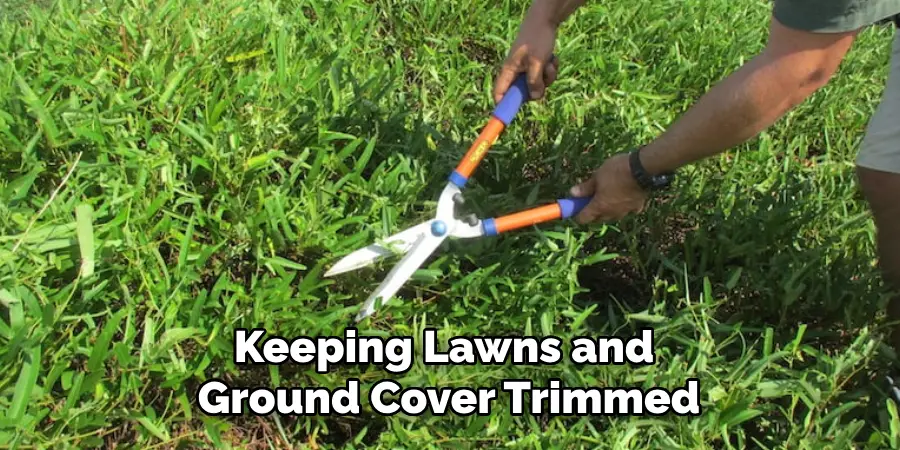
Keeping lawns and ground cover trimmed can also decrease the insects that wrens feed on, thus making your property less attractive from a food perspective. Clearing away any unused piles of wood or debris can eliminate potential nesting areas, further discouraging wrens from settling in.
C. Creating Unfavorable Conditions
Adjusting certain environmental factors can create conditions that are less appealing to wrens. For instance, modifying outdoor lighting can make your property less attractive to the insects that serve as food for wrens, thereby reducing the birds’ food sources.
Moisture levels can also be managed by ensuring proper drainage and fixing leaks in outdoor faucets, as excess water attracts insects, which in turn attract wrens. Changing landscape features, such as reducing the number of water features like birdbaths or small ponds, can also make an area less appealing to wrens. Consider using landscaping rocks or mulch in places where vegetation is dense, as these materials are less conducive to insect habitats.
Implementing these habitat modification strategies requires balancing making your property less inviting to wrens while maintaining a pleasant outdoor space for human enjoyment. These humane and environmentally friendly methods can effectively reduce wren populations without causing harm, promoting coexistence with these active and beneficial birds in a manner that respects their natural behaviors while protecting your property.
How to Get Rid of Wrens: Repellents and Natural Remedies
The use of repellents and natural remedies can serve as an effective and humane way to discourage wrens from frequenting your property. These methods leverage natural substances and predators, offering a less intrusive means of managing wren activity.
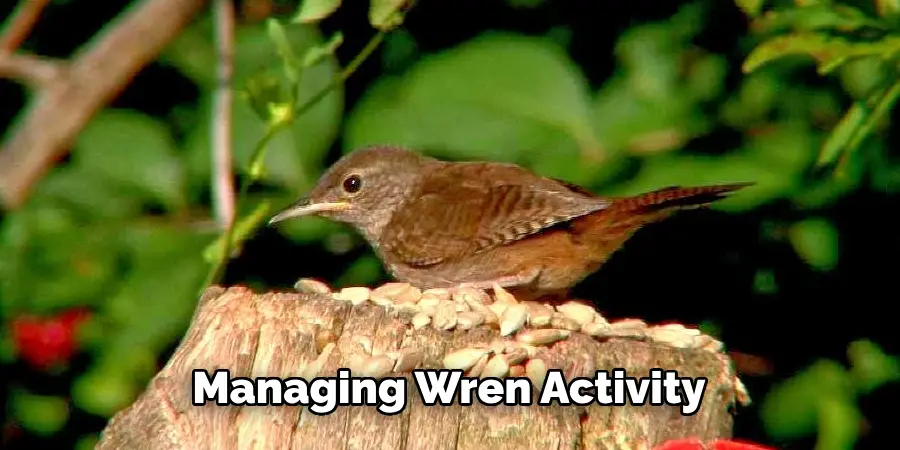
Here’s how you can implement these strategies:
A. Repellent Sprays
Repellent sprays can deter wrens by creating an unpleasant environment for them through the use of natural ingredients. Both commercial and homemade sprays can be effective. Homemade solutions often incorporate ingredients like garlic or chili pepper mixed with water, which can then be sprayed around the garden, on the eaves, or near potential nesting sites.
These natural ingredients are non-toxic to the environment and other wildlife, making them a safe choice for deterring wrens. To maintain effectiveness, it’s important to reapply these solutions regularly, especially after rainfall.
B. Aromatherapy
Strong-scented oils or herbs, such as peppermint or lavender, can be a natural deterrent for wrens. These scents are usually unappealing to birds and can be used to create an environment that wrens will avoid.
Essential oils can be diluted with water and sprayed around areas where wrens are not welcome, or small sacks of dried herbs can be placed strategically around the garden and home. Regular replenishment of these scents is necessary to keep them fresh and potent.
C. Predatory Animals
Introducing natural predators into your environment can be an effective, albeit more complex, strategy for reducing wren populations. This can include allowing a family cat to spend more time outdoors or even installing perches for birds of prey, such as hawks or owls, which can act as both a deterrent and a method of population control.
However, this approach requires careful consideration of the impact on local wildlife and pet safety. Ensuring that it aligns with local wildlife protection regulations is also important.

Implementing these repellents and natural remedies requires persistence and consistency. By combining these approaches with the strategies outlined in previous sections, you can create a comprehensive plan to manage wren activity humanely and environmentally friendly.
Trapping and Removal
Sometimes, despite best efforts to prevent and deter, wrens may persist in habituating or nesting in undesired areas around your property. In such situations, trapping and removal may become a necessary course of action. However, it is crucial to approach this method with humanity and legality in mind.
A. Live Traps
Utilizing humane live traps offers a method to capture wrens without causing them harm, enabling you to relocate them to a more suitable environment away from your property. These traps should be baited with food appealing to wrens and checked frequently to ensure any captured birds are not stressed or harmed.
Once captured, the wrens should be released in a habitat far enough from your property where they are unlikely to return but can thrive. It’s important to handle the birds carefully during the release process to minimize stress.
B. Professional Assistance
In cases where trapping and removal seem daunting or when wren populations are too large to manage individually, seeking help from wildlife removal experts or pest control services can be the safest and most effective solution.
Professionals in wildlife management have the expertise and equipment to trap and relocate wrens humanely. They can also offer a long-term solution to your wren problem by identifying and remedying attractions on your property. Selecting a service that emphasizes humane and ethical treatment is essential for the well-being of the birds.
C. Legal Considerations
Before proceeding with trapping and relocation, it is imperative to research and comply with local wildlife laws. Certain bird species, including some wrens, are protected under wildlife conservation laws that prohibit trapping or relocating without a permit in many areas. Consulting with local wildlife authorities or doing thorough research can ensure that your efforts to manage wren populations are within legal bounds, avoiding potential legal ramifications.
Navigating the process of trapping and removal with a focus on humanity and legality ensures the well-being of wrens and supports the balance of local ecosystems. By considering live traps, professional assistance, and legal requirements, property owners can effectively manage wren populations in a manner that respects both the environment and wildlife laws.
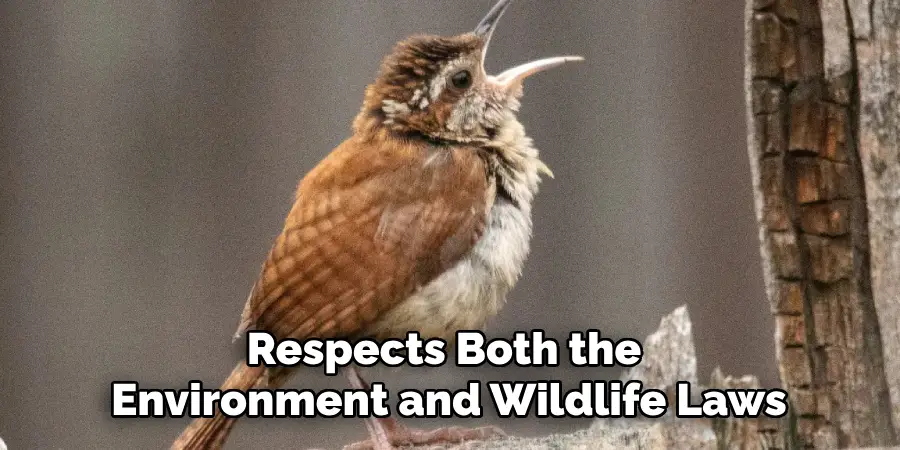
Monitoring and Maintenance
A. Regular Surveillance
Constant vigilance forms the bedrock of effectively managing and preventing wren infestations. By conducting regular surveillance of your property, particularly during early mornings when birds are most active, you can identify potential wren activity or nesting sites early.
Look for signs such as the accumulation of twigs, which could indicate the start of a nest or increased wren presence in certain areas. Early detection allows for prompt action, limiting the opportunity for wrens to establish a presence on your property.
B. Maintenance Practices
Engaging in regular cleaning and maintenance goes a long way in creating an environment that is less appealing to wrens. Eliminate clutter and debris in yards and gardens where wrens may seek shelter or materials for nest building. Secure food sources, such as pet food or bird feeders, to discourage wrens from foraging near your home.
Additionally, maintaining the landscape, such as trimming back overgrown bushes or trees, can reduce nesting opportunities for these birds. Such preventative measures reduce the chances of wren infestation and support a tidy, less bird-attractive property.
C. Adjusting Strategies
Flexibility in your approach to managing wrens is crucial for long-term success. If you find that certain repellents, barriers, or deterrence methods are ineffective, be prepared to adjust your strategy. This might involve experimenting with different types of natural repellents, changing the placement of physical barriers, or even alternating the times you spend monitoring for wren activity.
Staying informed about new humane and environmentally friendly bird control methods and being willing to adapt based on observed effectiveness and environmental impact ensures a proactive stance against wren infestations.
Frequently Asked Questions
Q1: Are All Types of Wrens Protected by Wildlife Conservation Laws?
A: Not all wren species are protected under wildlife conservation laws, but many are. The level of protection can vary significantly by region and species. It is crucial to consult with local wildlife authorities or conduct thorough research to determine the protections applicable to wrens in your area.
Q2: How Far Should I Release Trapped Wrens from My Property?
A: It is recommended to release trapped wrens at least a few miles away from your property to ensure they do not return. However, the exact distance can depend on the species and local habitat availability. Consulting with wildlife experts can provide guidance tailored to your specific situation.

Q3: Can Using Live Traps Harm the Wrens?
A: If used correctly, live traps are designed to capture wrens without causing harm. It is important to check traps frequently to minimize birds’ stress and release them promptly into a suitable habitat. Following the manufacturer’s instructions and handling the birds gently during the release can further reduce the risk of harm.
Q4: What Should I Do if I Accidentally Trap a Protected Bird Species?
A: If you accidentally trap a bird that is protected under wildlife conservation laws, it is important to release it immediately and unharmed. If the bird is injured, contact local wildlife authorities or a licensed wildlife rehabilitator for guidance on proper care and release procedures.
Q5: How Can I Ensure that The Professional Assistance I Hire for Wren Removal Adheres to Humane and Ethical Treatment?
A: When selecting professional wildlife removal services, inquire about their methods and ensure they use humane and ethical practices for trapping and relocating birds. Look for services with good reviews, recommendations, or certifications in humane wildlife management. Asking detailed questions about their approach and expected outcomes can also provide insight into their practices.
Q6: What Are the Best Natural Repellents to Use Against Wrens?
A: Natural repellents that can deter wrens include peppermint oil, citronella, and visual deterrents like reflective tape or objects. The effectiveness of these repellents can vary, so it may be necessary to try different types or combinations and observe which ones work best for deterring wrens from your property.
Conclusion
In this guide, we have explored a comprehensive range of strategies and techniques for how to get rid of wrens from your property. From employing natural repellents and physical barriers to understanding the importance of habitat modification and legal trapping and removal methods, we have covered essential tactics that aim at minimizing wren activity in humane and environmentally friendly ways.
The importance of humane and responsible wren removal practices has consistently been emphasized. It’s crucial to remember that while our goal is to protect our properties from unwanted wren infestations, it is equally important to ensure the well-being of these birds and the ecological balance of our surroundings.
We wish you success in managing wren infestations and maintaining a wren-free environment! By applying these strategies with patience and diligence, you are well on your way to creating a peaceful coexistence with local wildlife, respecting both your living space and the natural world that surrounds us.
About
Outdoor Fixes is a distinguished figure in the world of Diy design, with a decade of expertise creating innovative and sustainable Diy solutions.
His professional focus lies in merging traditional craftsmanship with modern manufacturing techniques,
fostering designs that are both practical and environmentally conscious. As the author of diy,
outdoorfixes delves into the art and science of outdoorfixes-making, inspiring artisans and industry professionals alike.
Education RMIT University
(Melbourne, Australia) Associate Degree in Design (Outdoor Fixes) Focus on sustainable design, industry-driven projects,
and practical craftsmanship. Gained hands-on experience with traditional and digital manufacturing tools, such as CAD and CNC software.
Nottingham Trent University
(United Kingdom) Bachelor’s in outdoorfixes.com and Product Design (Honors) Specialized in product design with a focus on blending creativity with production
techniques. Participated in industry projects, working with companies like John Lewis and Vitsoe to gain real-world insights.
Publications and Impact
In diy, Outdoor Fixes his insights on indoor design processes, materials, and strategies for efficient production.
His writing bridges the gap between artisan knowledge and modern industry needs, making it a must-read for both budding designers and seasoned professionals.

